Traditional Mayan Weaving vs Machines
The Industrial Revolution’s Latest Conquest. This is not the end of traditional Mayan weaving, but it is having a huge impact.
Beautiful huipil, isn’t it? It’s the current style, one of them. In some parts of Guatemala, monochromatics are the moda, so this would likely be worn with a multi-green skirt if the woman is from one of those areas. (In some places that fashion has already passed.)
In the past, a huipil like this was woven on a backstrap loom, utilizing a hand-picked brocade technique, and would likely take a couple of months to weave. In some places it still is and does.
- Hand weaving
- Huipil panel
One panel for a huipil that is far more complex than the green one. To finish this one could easily take four months. (Easily in time, not effort.) But whereas the industrial revolution arrived on North American shores some 200 years ago, for traditional clothing it is only just getting to Guatemala. That green huipil is not an example of handwoven brocade, but an industrially produced embroidery that looks like cross-stitch. Look at the inside, with its many white threads and a vellum backing for support. This huipil was embroidered on the machine below, which can produce 30 every 24 hours. This one is in Totonicapán, but there are many around the country now.
While most people are viewing this through a lens of cultural destruction, it can also be seen as parallel to Walmart. People who can afford not to shop there rant and rave against it all the time, but the people who need (or just want) those lower prices are legion, enough to make Walmart the biggest walk-in retailer in the world. Those of us who can afford the luxury of huipils that take months to weave can cry all we want, and we do and will. But there are women who cannot afford to wear traditional clothing, their poverty cutting them off from that part of their cultural expression. They had quit wearing them, and it was breaking their hearts. Now, thanks to the same machines that clothe all of us, they can once again look like they belong, feel at home.
And it is not only a matter of poverty. Some women like the newness, the tremendous variety available, the lighter weight (it gets hotter here every year, no joke), and being able to have several huipils in their closets to choose from. Do I need to point out that the young girl weaving the huipil (photo far left) is not wearing traditional dress?
This is not the end of traditional Mayan weaving, but it is having a huge impact. So for those of us who want weavers to continue to weave, what do we do? Support them, that’s what. We cannot stop “progress;” the machines are here and are not going away. But we can do everything possible to give value to hand-woven, hand-embroidered, traditional textiles, in Guatemala and everywhere else.
When you get to the market, don’t bargain the price down as far as you can. Some bargaining is expected and planned for, so yes, do some. But however high the initial asking price is, you can be sure it is a small fraction of what a first-world weaver would be asking for equivalent work (if she could even do equivalent work).
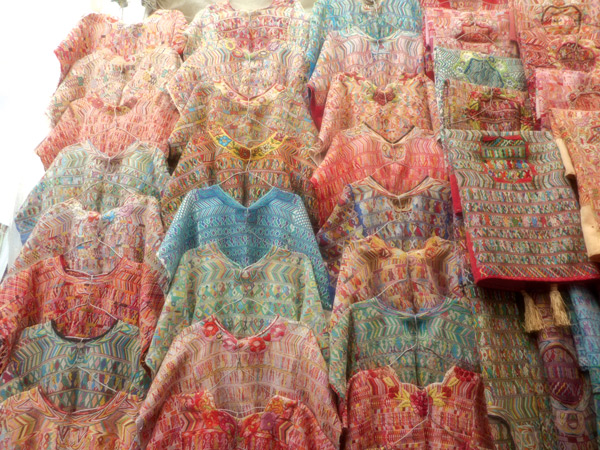
Huipils from San Juan Cotzal in the market in Chichicastenango, at least some are there because their former owners want money to weave a new one in new colors.
As much as the price, focus on having a conversation about the pieces you are looking at. Ask where they came from, who wove them, how long it took, how they got the materials, when it was in style (it changes a lot faster than most people think — the huipils above were in fashion five years ago but are out now), what the symbols mean, how it gets worn, and everything else you can think of. Show that it matters, because it does. And don’t stop after the first answer, which is invariably, “My mother wove it.” A 30-second level of interest deserves a 30-second answer.
Educate yourself in advance, and more when you arrive.
This assortment of scarves are all too common now. Of those, maybe half are handwoven, half are commercial imports, not labeled as such. Do you know which is which? A couple of clues: The fancy fringes are hand-knotted at the end of handwoven scarves; those were probably all done on foot looms. The yellow and green with trees, etc. – ikat/jaspe, probably woven on backstrap looms. All the rest, of which you will see countless in the markets here now, are commercial—the pink, black/white, and orange/blue gray, and the far right rust/flowers.
If this matters to you, learn all you can—not only about the politics, but about the textiles themselves. Then find ways to express your concern, to let the artisans doing the work and living the life know that someone on the outside cares. Get as creative about it as you want them to be. As for me, I intend to do all I can to help with that education process, writing whatever I think will help anyone to understand. And I welcome questions, so feel free to ask. (I won’t always know the answers, but will do what I can to find out.)
REVUE article, text and photos by Deborah Chandler.
Deborah Chandler lived a life of all-things-weaving in the U.S. until she moved to Guatemala in 1999. Since arriving here she has worked with Maya weavers, most notably as the in-country director of Mayan Hands (.org) for nine years, and then, with co-author Teresa Cordón Guzmán and photographer Joe Coca, creating the book “Traditional Weavers of Guatemala – Their Stories, Their Lives” sharing the stories of 20 artisans and the part textiles play in their lives. The book is available in La Antigua Guatemala, Panajachel, Chichicastenango, and Santiago Atitlán, and with over 200 gorgeous color photographs, even non-English-readers love it.
This article first appeared on the blog weavingfutureswithdc.wordpress.com
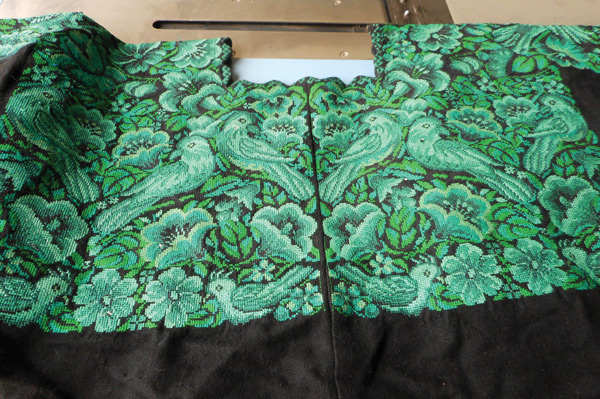
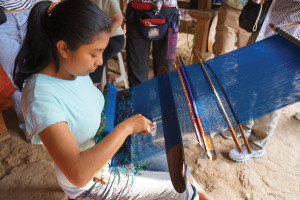
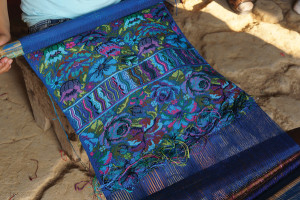
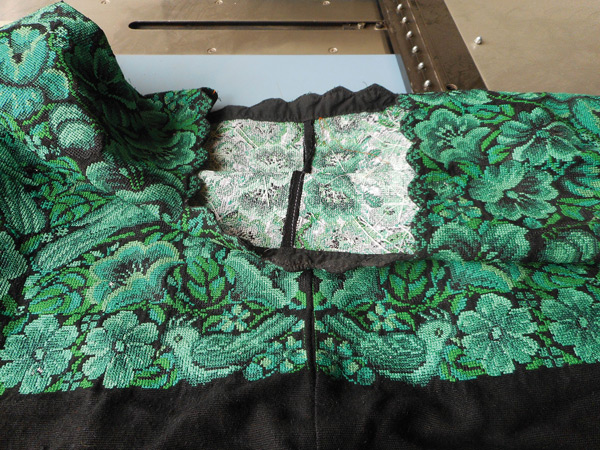
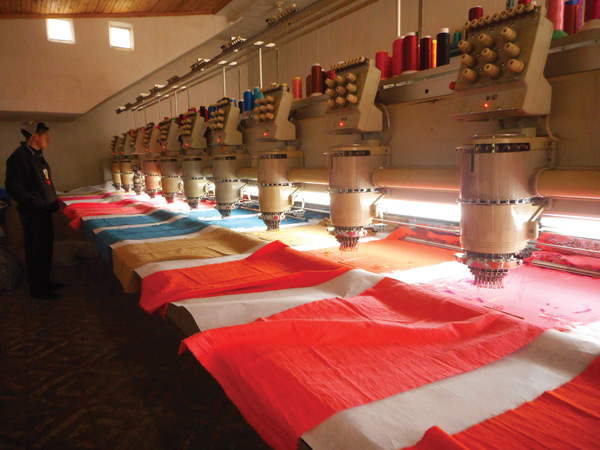
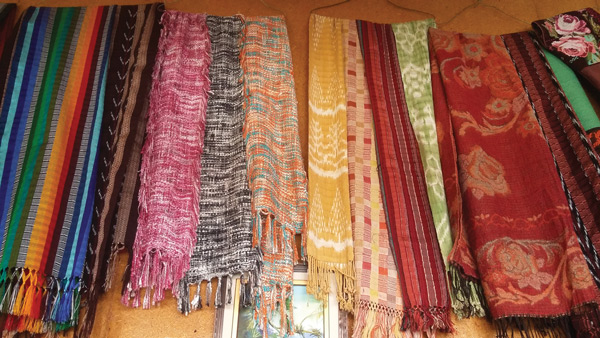
Wonderful article by Deborah. So sad to see this tradition disappearing. We continue to do our part in informing our travelers, who are artists (many are fiber artists), about what they can do to support these weavers and this wonderful tradition. We are Explore Guatemala, a travel company specializing of the past 17 years in bringing groups of artists to Guatemala. http://www.exploreguatemala.com. Thank you for publishing this article.
Thank you John.
This is exactly the yes to on I have just been asking myself. Thank you.
darn auto fill. I meant to say this is exactly the Question I have been asking….
Thank you, Deborah for this interesting article.